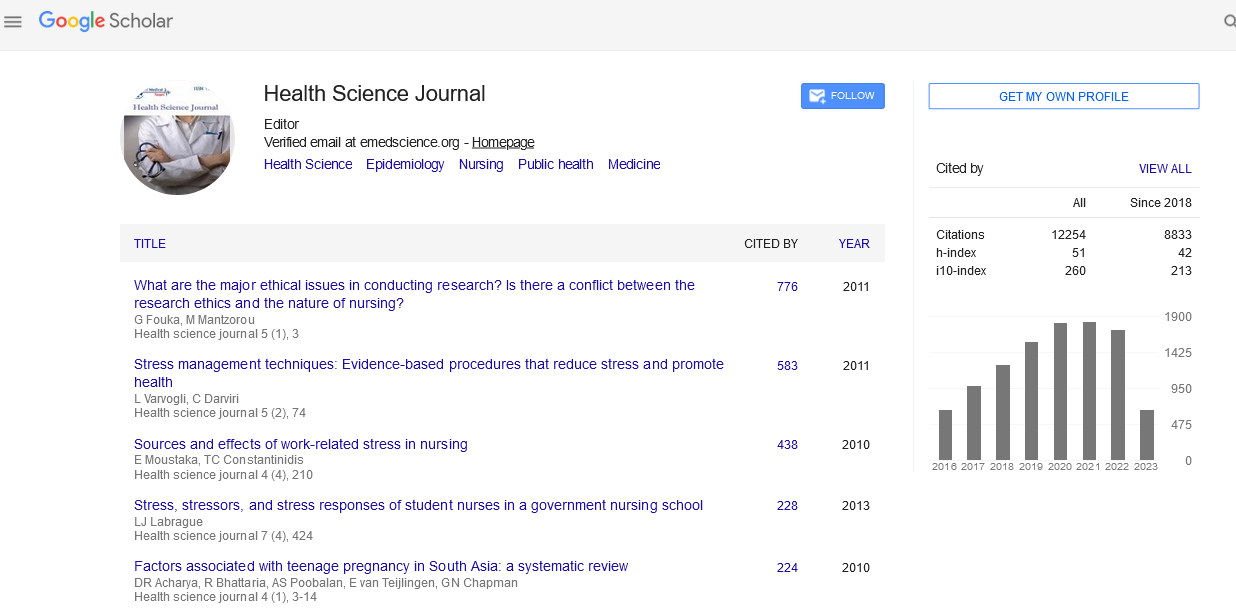Editorial - (2025) Volume 19, Issue 3
A Comprehensive Review of Women’s Health Challenges Progress and Future Directions
Ben Joseph*
Department of Health Science, Texas University, USA
*Correspondence:
Ben Joseph, Department of Health Science, Texas University,
USA,
Email:
Received: 01-Feb-2025, Manuscript No. Iphsj-25-15675;
Editor assigned: 04-Feb-2025, Pre QC No. Iphsj-25-15675 (PQ);
Reviewed: 17-Feb-2025, QC No. Iphsj-25-15675;
Revised: 29-Mar-2025, Manuscript No. Iphsj-25-15675 (R);
Published:
31-Mar-2025
Abstract
Women’s health encompasses a broad range of medical, social, and psychological issues unique to women across their lifespan. While significant progress has been made in addressing reproductive health, maternal mortality, and access to healthcare services, persistent disparities still exist. This article provides a comprehensive overview of the current landscape of women’s health, including reproductive health, non-communicable diseases, mental health, and socio-economic determinants. The paper also highlights the intersectionality of gender, race, and income in shaping health outcomes, and discusses emerging strategies for advancing gender-equitable healthcare.
Introduction
Women's health is an essential component of global public health. It extends beyond reproductive concerns and includes a wide spectrum of health challenges such as cardiovascular disease, cancer, autoimmune conditions [1], and mental health disorders. Despite advancements in healthcare technologies and increased awareness, women continue to face systemic barriers to receiving appropriate, timely, and equitable healthcare. Women's health is a crucial pillar of global health and development, encompassing not only reproductive and maternal well-being but also a wide range of physical, mental, and social health issues that women face throughout their lives. Historically, healthcare systems and scientific research have often prioritized male biology, resulting in significant gaps in understanding and addressing women's unique health needs. From adolescent health and reproductive care to aging-related conditions and chronic diseases, women experience distinct challenges that are shaped by biological, socio-cultural, and economic factors. Over the past few decades, significant progress has been made in improving health outcomes for women. Advancements in maternal healthcare, increased access to contraception [2], expanded screening programs for cancers, and growing awareness around gender-based violence have all contributed to improved quality of life for many women worldwide. However, persistent disparities remain—especially among marginalized populations—highlighting the need for more inclusive, equitable, and culturally competent healthcare systems. This review aims to provide a comprehensive overview of the current state of women's health by examining the key challenges that continue to affect women globally, evaluating the progress achieved thus far, and exploring emerging strategies and future directions to ensure better health outcomes for all women.
Historical Perspective and Milestones
Historically, women's health was narrowly focused on reproductive functions, often neglecting other aspects of their well-being [3]. The feminist movements of the 20th century, coupled with policy developments like the establishment of the Office on Women’s Health (OWH) in the U.S. in 1991, helped pivot the focus toward a more holistic understanding of women’s health.
Reproductive and Maternal Health
Access to contraception is fundamental for reproductive autonomy. Modern contraceptives not only allow family planning but are also linked to reductions in maternal and infant mortality. However, barriers such as lack of education [4], cultural stigma, and cost continue to affect usage in low-income regions. Globally, maternal mortality has declined, but disparities remain stark. In low-income countries, women are still dying from preventable causes such as hemorrhage, infections, and eclampsia. In high-income countries like the U.S., maternal mortality is rising, especially among Black women, indicating racial disparities in healthcare access and quality.
Non-Communicable Diseases (NCDs)
Often misconceived as a male condition, cardiovascular disease is the leading cause of death in women globally. Women may experience atypical symptoms and are often underdiagnosed. Risk factors include obesity, smoking, and hormonal changes, especially post-menopause. Breast and cervical cancers are the most common among women. While screening programs have reduced mortality rates, access remains unequal across regions. Emerging trends also highlight the growing burden of lung cancer among women due to rising tobacco use [5].
Mental Health and Emotional Well-being
Women are more likely than men to experience mood disorders, including depression and anxiety, partly due to hormonal fluctuations and social determinants like caregiving roles and economic inequality. Postpartum depression is a critical area needing more support and awareness.
Sexual and Gender-Based Violence (SGBV)
One in three women worldwide experiences physical or sexual violence in their lifetime, often from an intimate partner. The physical and psychological impacts of SGBV are profound, contributing to chronic illness, trauma, and reduced life expectancy. Legal reforms and support services are improving but are not yet universally accessible.
Conclusion
Women’s health is a dynamic and multifaceted issue that requires continued commitment from global health systems, policymakers, and communities. By addressing both biological and socio-economic determinants, and integrating gender equity into all levels of healthcare, we can advance a future where women enjoy full, healthy lives across all stages.
References
Crossref
Google Scholar, Crossref
Indexed at, Google Scholar, Crossref
Google Scholar, Crossref
Indexed at, Google Scholar, Crossref
- Nissimov JN, das Chaudhuri AB (2014) Hair curvature a natural dialectic and review. Biological Reviews 89: 723-766.
- Odokuma EI, Eghworo O, Avwioro G, Agbedia U (2008) Tongue Rolling and Tongue Folding Traits in an African Population. Int J Morphology 26: 533-535.
- Previc FH (1996) No rightâ?handedness, central nervous system and related pathology, and its lateralization: A reformulation and synthesis. Dev Neur 12: 443-515.
- James V, Corino G, Robertson T, Dutton N, Halas D et al. (2005) Early diagnosis of breast cancer by hair diffraction. Int J Cancer 114: 969-972.
- Kappert KDR, van Dijk S, Wellenstein D, van Alphe MJA, van Son RJJH et al. (2021) Five Specific Tongue Movements in a Healthy Population. Dysphagia, 36: 736-742.
Citation: Joseph B (2025) A Comprehensive
Review of Women’s Health Challenges
Progress and Future Directions. Health Sci J.
Vol. 19 No. 2: 1233.





